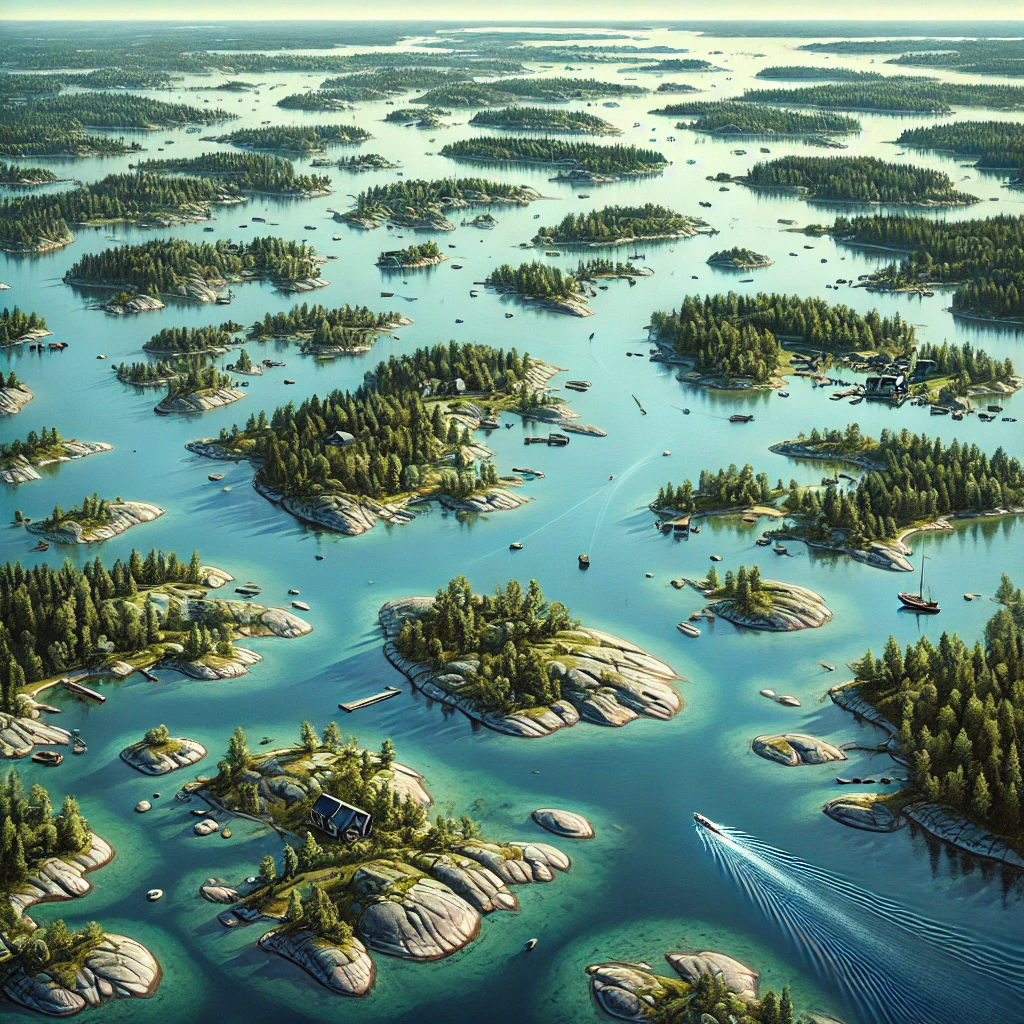Located in the Baltic Sea between Finland’s mainland and the Åland Islands, the Archipelago Sea is one of the most unique and expansive archipelagos in the world. With its breathtaking landscapes, diverse wildlife, and rich cultural heritage, the Archipelago Sea is a national treasure. Learning about this distinctive region is essential for those preparing for the Finnish citizenship test, as it highlights Finland’s natural diversity and connection to the sea.
Geography and Formation
The Archipelago Sea is made up of an astonishing number of islands—estimates range between 20,000 and 50,000, depending on the size criteria used. Most of these islands are small, with only a few large enough for permanent settlement. The archipelago spans a roughly triangular area, bordered by the Gulf of Bothnia to the north and the Åland Sea to the south.
This intricate landscape formed through a combination of geological processes. During the last Ice Age, massive glaciers carved out shallow basins, which later filled with water as the ice receded. A phenomenon called “post-glacial rebound” continues to this day, slowly lifting the islands at a rate of about 8 millimeters per year. This gradual rising causes new islands to emerge while others grow in size, making the Archipelago Sea a dynamic, ever-evolving environment.
Biodiversity in the Archipelago Sea
The Archipelago Sea is not only a landscape of immense beauty but also a hotspot of biodiversity. The brackish waters of the Baltic Sea create a unique ecosystem where both freshwater and saltwater species coexist. The area is home to numerous fish species, seals, and a wide range of bird species, including the white-tailed eagle and the black guillemot.
During migration seasons, the archipelago becomes a critical stopover for thousands of migratory birds. Conservation efforts by Finland have helped protect many of these habitats, which are essential for maintaining the ecological balance of the Baltic Sea. Several national parks, including the Archipelago National Park, provide protected areas where visitors can experience the natural beauty while supporting the preservation of biodiversity.
The Cultural Heritage of the Archipelago
For centuries, the Archipelago Sea has been a vital region for trade, fishing, and seafaring. Early inhabitants relied on the sea for food, trade routes, and connections with neighboring regions. Today, the archipelago retains a unique cultural heritage influenced by both Finnish and Swedish traditions, as many islanders speak both languages. The islands’ remote location has also fostered a tight-knit community culture, where cooperation and mutual aid are deeply valued.
The Archipelago Sea is known for its historical landmarks, including ancient stone churches, fishing huts, and lighthouses. One of the most iconic lighthouses, Bengtskär, is located on the outer edge of the archipelago and has become a symbol of the region. Many of the islands also have local museums and heritage centers that preserve the history of island life, seafaring, and the fishing industry.
Tourism and Sustainable Development
The Archipelago Sea is a popular destination for both domestic and international tourists, who are drawn to its natural beauty and opportunities for outdoor activities like boating, kayaking, and hiking. The Archipelago Trail (Saariston Rengastie) is a scenic route that allows visitors to explore the islands by ferry, bridge, and road, showcasing the stunning landscapes and traditional villages.
Sustainable tourism is a priority in the region, as local communities and conservation groups work to preserve the fragile ecosystems and minimize human impact. Finland’s efforts in promoting responsible tourism are essential in ensuring that future generations can enjoy this unique environment without compromising its natural and cultural resources.
The Archipelago Sea’s Importance for Finnish Identity
The Archipelago Sea holds a special place in Finnish culture, symbolizing the country’s deep connection to nature, resilience, and maritime heritage. It is also an area where Finland’s commitment to environmental preservation shines, with ongoing initiatives to protect marine life and support local communities.
For those studying for the Finnish citizenship test, understanding the Archipelago Sea offers insight into Finland’s geography and environmental values, as well as its historical and cultural significance. Whether you’re exploring the archipelago’s scenic trails or learning about its ecological importance, the Archipelago Sea represents an essential part of Finland’s identity.


